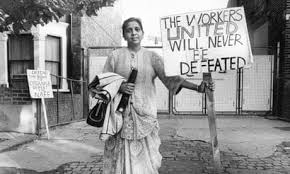The media has been full of the 50th anniversary of the Carnation Revolution over the last week. It happened in Portugal. And apparently, Portugal wasn’t even a respectable democracy 50 years ago! Since a coup in May 1926, Portugal was under an authoritarian regime. In 1932, Antonio Salazar took over as Prime Minister, and remained at the helm of affairs till 1968 and continued to hold the reins of power tightly, with little say for the people in anything. He alo would not give up Portugal’s large overseas territories including Goa, Daman, Dadra and Nagar Haveli. In India of course, the Indian armed forces invaded, and supported by the local freedom fighters, took over in 1961. Portugal continued fighting long-drawn colonial wars in other parts of the world. Within Portugal also, it was an authoritarian rule. Finally, in 1974, the people of Portugal lost patience. On 25th April, there was a largely peaceful coup led by members of the Armed Forces Movement and backed by civilians from all walks of life. It began to be called the Carnation Revolution because there were almost no shots fired. It being the carnation season, the markets were full of carnations, and people started giving them to each other and also placed them in the muzzles of the soldiers’ guns, as well as in their button holes. It was a happy ending!

Many subsequent peaceful revolutions have been named after flowers, including: The Tunisian revolution of 2010-11 is called the Jasmine Revolution in honour of the country’s national flower. In the Rose Revolution in Georgia in 2003, Opposition leader Mikhail Saakashvili carried a rose into parliament when he demanded the resignation of President Eduard Shevardnadze, while protesters in the streets gave long-stemmed roses to soldiers called out to stop them. The President resigned. The 2005 Tulip Revolution in Kyrgyzstan forced President Askar Akayev to flee the country.
But the association of wars with flowers goes further back than that. The famous War of Roses was a long-drawn series of inter-generational wars for the British throne. Fought over 30 years starting 1455, the war was between the House of Lancaster and the House of York, descendants of two sons of Edward III who reigned from 1330-1377. Amidst claims and counter-claims to the throne almost as complicated as between the Pandavas and Kauravas, the war raged till Henry Tudor (later Henry VII) who represented the claim of the House of Lancaster, won the Battle of Bosworth, and sealed the claim by marrying Elizabeth of York, the daughter of the Yorkist King, thus uniting the two houses. The War of Roses is so called for the symbols of the two sides—the white rose of York and the red rose of Lancaster. After the marriage of Henry and Elizabeth, the symbol was combined in a way that overlaid the white and red roses.
But the oldest of flower-wars has to be war over the parijata tree fought between Krishna and Indira. The origin of the story goes back to the Harivamsam (1st or 2nd century BCE). In this tale, Narada gives Krishna a single enchanting blossom of the parijata flower from the special tree in Indra’s garden. Krishna is with his senior-wife Rukmini at the time, and gives it to her. When the junior-wife Satyabhama hears of this, she is angry beyond belief and is only pacified when Krishna promises to fetch her the tree itself from the heavenly garden. However, Indra refuses to part with the tree, and Krishna has to fight a mighty battle—which of course he wins. And the parijata is brought to earth and planted here. (See ‘Heaven’s Flower’ https://wordpress.com/post/millennialmatriarchs.com/164)
So flowers can cause wars. And they can stop wars.
It’s a choice we have to make today!
–Meena








